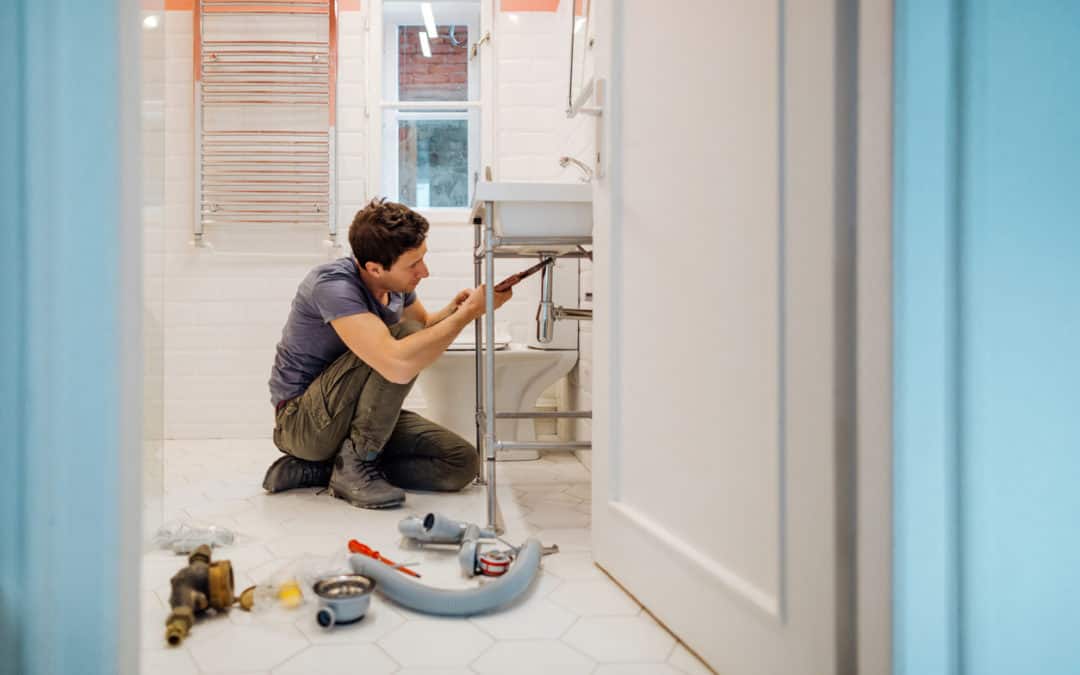When you think about issues plumbing companies face, you probably do not consider plumber’s knee. But almost two-thirds of plumbers experience knee problems. Less than half discuss this pain and inflammation with their doctor. The IPG, a support membership group for people in the plumbing industry, reports that almost 60 percent of plumbers expect to need knee replacement surgery in the future because of the effects of their work. Roughly the same number believe they will have to retire early for the same reason.
Most plumbers in Great Britain work just under 50 hours per week. They are on their knees for about half of that work time. If they do not wear the appropriate protective gear, they will definitely experience negative changes in their knee condition. But even with kneepads, more than 3/4 of all plumbers suffer long-term knee problems.

What is plumber’s knee?
Plumber’s knee is another name for a condition called knee bursitis. Bursitis of the knee is inflammation of the bursa, a small sac adjacent to your knee joint. This sac is filled with fluid to cushion and reduce the friction of areas of the knee typically under great pressure, such as between bones, tendons, muscles and skin.
Bursitis occurs when one of these sacs becomes inflamed. The most common types of bursitis occur on the inner knee beneath the joint or over the kneecap.
Plumber’s knee is painful and limits the knee’s range of motion. Treatment involves self-care and medical methods to relieve swelling and pain.
Symptoms of Knee Bursitis
Symptoms of knee bursitis vary from person to person. Much of the pain and mobility issues depend on which bursa is inflamed and what is causing the problem. However, there are some typical symptoms for plumber’s knee. These include:
- Warmth at the affected area of the knee
- Knee tenderness
- Swelling
- Pain during movement
- Pain when at rest
- Aggravation of symptoms when kneeling or applying pressure to the knee
Symptoms can appear more quickly with a direct hit to the knee. But most of these problems occur in occupations like plumbing, where workers must kneel on hard surfaces for long periods of time. Symptoms can start slowly and increase over time.
Plumber’s Knee Prevention
Because knee bursitis is so common in the plumbing industry, plumbing companies need to educate their workers about the risks and methods of prevention. Some of the tips key to preventing this condition include:
- Wearing kneepads whenever working on bended knees
- Taking breaks frequently to stretch legs and relax the knees
- Avoiding excessive squatting or repeated knee bending to reduce strain on knee joints
- Maintaining a healthy weight to reduce the pressure put on knee joints
Besides following these preventive measures, it is important for plumbers to understand the high risk of these occupational injuries. It is important for each individual to visit their doctor regularly for knee bursitis screening and check-ups.
Plumbers should never underestimate the benefits of taking regular breaks and protecting their knees by wearing professional-grade kneepads. When kneepads are not available, a cushion can provide protection for knee-based work.
Ultimately, preventing knee bursitis and helping plumbers with plumber’s knees stay healthy is important for any plumbing company. Missed workdays because of pain and inflammation affect the bottom line of plumbing companies. The same is true of companies losing experienced workers to this common condition as associated with early retirement. Education can help everyone in the industry stay healthier to enjoy longer and more fruitful careers.

Recent Comments